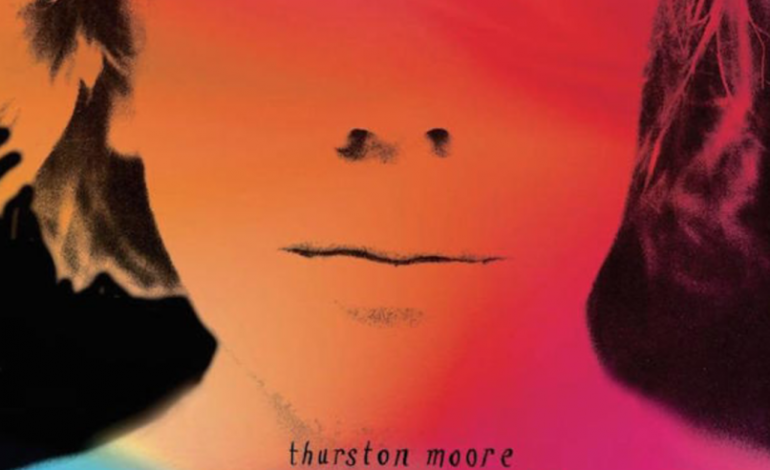

A Familiar Wall of Sound
This is a warm blanket, a starlit picnic in a wide open field, arm-in-arm with a loved one; or that is how it begins. Before long, there is howling wind and huddled mass, bodies gripped onto each other for warmth as the cool summer breeze morphs into a maelstrom. There is no better way to describe the latest album by Thurston Moore than to call it a rising storm. It feels like post-rock, the swelling guitars and long song structures are immediately familiar to anyone who has listened to Mogwai, but the lingering remnants of Sonic Youth are undeniable, and add a familiar, warm sound to the often furious gale that is Rock N Roll Consciousness.
The post-rock elements are most notable on the eleven-minute opening track “Exalted,” on which Moore exhibits a masterclass in working knowledge of the guitar as an instrument, effortlessly gliding between bluesy picking and heavy feedback riffs reminiscent of a Mogwai crescendo or even portions of Dopesmoker toward the beginning of the swell. The beginning of the song is light twinkling that unexpectedly evolves into the aforementioned cacophony; and it manages to do so in such a sudden and jolting way that it is sure to grab the listener by the collar and throw them full-heartedly into the chaos. The song closes much in the way it started, giving it a solid sense of closure and completion as the circle folds in on itself. The second song on the album, “Cusp,” is far more in the vein of Moore’s work with Sonic Youth, featuring his signature noisy guitar work and layering, coupled with washed out, distant and dreamy vocals that lend the track an almost shoegazey quality. The track lingers just long enough that the listener is not left hanging when it exits, but it still allows itself to satisfactorily close.
The next centerpiece track of the album is “Turn On,” which begins with a similar twinkling to “Exalted.” The drumwork is slow and methodical and the guitar is at the forefront, being quietly picked upon by Moore as the instrumentation grows in layers until finally reaching a crescendo. This is extremely similar to how Mogwai executed their earlier albums, adding layer after layer in repetitive motion before beginning a massive upsweep in tone and pace that ultimately culminates in a furious crescendo to blow the listener off their feet. The most enjoyable moment of the record comes slightly before the vocals enter, when the rise in tone and layering breaks out into a wide open strum with greater open spaces, as if the listener were sprinting up a hill and finally reached the crest before beginning the final descent.
Thruston Moore’s legacy is one of the most solid within modern rock history and Rock N Roll Consciousness is clearly capable of standing alongside much of his work both during and after his time in Sonic Youth. The only complaints that could be reasonably levied against this album are that the vocals often detract from the fantastic guitar work and shove themselves into a spotlight of which they are often undeserving. The second is that the album, while technically solid and largely enjoyable, does not break new ground in any way and is instead much more content to simply coast along the wave of Moore’s previous work. That being said, Rock N Roll Consciousness is a more than worthwhile listen, and is especially welcome in today’s minor drought of crescendo-driven post-rock music.
